Climate Change Science
Inherent great danger
It is important to express the problem accurately. The issue is air/atmospheric pollution, and the impacts are much more than climate change.
The main sources of GHG emissions are already dangerous and have been damaging the environment and human health since the fossil fuel industrial revolution. Burning more fossil fuels causes more health damaging effects of fossil fuel air pollution.
Adding GHGs to the atmosphere to the atmosphere is catastrophically dangerous because the climate system is characterized by enormous inertia and momentum.
It is important to express the problem accurately. The issue is air/atmospheric pollution, and the impacts are much more than climate change.
The main sources of GHG emissions are already dangerous and have been damaging the environment and human health since the fossil fuel industrial revolution. Burning more fossil fuels causes more health damaging effects of fossil fuel air pollution.
Adding GHGs to the atmosphere to the atmosphere is catastrophically dangerous because the climate system is characterized by enormous inertia and momentum.
The great momentum is because of heat stored in the ocean and because CO2 emissions last in the atmosphere thousands of year
The carbon cycle we are taught about is a carbon re-cycle that only stores carbon for a while, then returns it to the atmosphere.
The carbon cycle can only truly sink carbon (removing it from the carbon cycle) extremely slowly- hence CO2 lasts many 1000s of years.
Another reason for momentum and catastrophic danger is that many chain reactions are set in motion of many interacting reinforcing impacts and many feedbacks.
Taken together greenhouse emissions warm and energize the lower atmosphere causing global warming, climate change (disruption), extreme weather events, ocean acidification (on top of ocean warming), and amplifying feedbacks.
The carbon cycle we are taught about is a carbon re-cycle that only stores carbon for a while, then returns it to the atmosphere.
The carbon cycle can only truly sink carbon (removing it from the carbon cycle) extremely slowly- hence CO2 lasts many 1000s of years.
Another reason for momentum and catastrophic danger is that many chain reactions are set in motion of many interacting reinforcing impacts and many feedbacks.
Taken together greenhouse emissions warm and energize the lower atmosphere causing global warming, climate change (disruption), extreme weather events, ocean acidification (on top of ocean warming), and amplifying feedbacks.
UK Science Museum Climate Science Info Zone
In science terms we have the terminology of the issue poorly expressed.
The issue is ATMOSPHERIC GREENHOUSE GAS POLLUTION
Mainly caused by FOSSIL FUEL POLLUTION (of air water and atmosphere)
This results in deadly air pollution that is a huge factor in deaths from many causes.It is deadly to the biosphere CLIMATE SYSTEM DISRUPTION
and OCEAN DISRUPTION acidification (CO2)+heating+ deoxygenation
The issue is ATMOSPHERIC GREENHOUSE GAS POLLUTION
Mainly caused by FOSSIL FUEL POLLUTION (of air water and atmosphere)
This results in deadly air pollution that is a huge factor in deaths from many causes.It is deadly to the biosphere CLIMATE SYSTEM DISRUPTION
and OCEAN DISRUPTION acidification (CO2)+heating+ deoxygenation
BC Soot The greenhouse particulate aerosol emission black carbon soot has now been found to be 2nd to CO2 in emissions global warming
The sources of the greenhouse emissions. They fall into two main general
categories- industrial age energy production and industrial age food production.
Now it just so happens that the main greenhouse emissions produced by our fossil fuel industrial age are the exact same three greenhouse gases- carbon dioxide (CO2) methane (CH4) and nitrous oxide (N2O).
The big three GHGs are classified as long lived GHGs, due to their long atmospheric lifetime
It is more than significant that these are also the two main general sources of our industrial age consumer culture chronic degenerative diseases and death, like cancers, diabetes and cardiovascular disease. Fossil air pollution is well known as a cause and aggravation
It is more than significant that these are also the two main general sources of our industrial age consumer culture chronic degenerative diseases and death, like cancers, diabetes and cardiovascular disease. Fossil air pollution is well known as a cause and aggravation
of asthma and chronic respiratory disease.
There are three main greenhouse gases naturally produced by planet Earth that are the planet's thermostat, swinging the climate in and out of ice ages and warm inter-glacials.
There are three main greenhouse gases naturally produced by planet Earth that are the planet's thermostat, swinging the climate in and out of ice ages and warm inter-glacials.
We know this from the 800,000 year ice core
Right now we are at the top of a warm period and normally would be cooling off on the way to an ice age.
Now it just so happens that the main greenhouse emissions produced by our fossil fuel industrial age are the exact same three greenhouse gases- carbon dioxide (CO2) methane (CH4) and nitrous oxide (N2O).
We emit several others as well constantly, in smaller amounts.
Then consider that we intentionally try to burn the most fossil fuels that we can to constantly increase our energy fossil fuel energy output, which we call 'economic growth'. It has to constantly increase out global CO2 emissions, which has to constantly increase radiative forcing (planetary heating) and ocean acidification. We no longer have to do this, because clean renewable energy sources can far more than replace all the fossil fuel the world uses.
The constant emission of several long lasting (in the atmosphere) powerful global warming greenhouse gases would seem to be inherently highly dangerous.
The reason is because they are long lasting they all have to accumulate in the atmosphere so long as they being constantly emitted, and it would have to take a very long time after stopping emissions for their concentration in the atmosphere to drop.
We know they are very powerful because they are 'trace' gases existing in tiny concentrations of parts per million and parts per billion.
Even so they make the difference between a habitable planet and a frozen lifeless planet.
Then on top of that there is another big reason.
Feedbacks
Climate change science is all about feedbacks.
Dangerous climate change is all about +ve amplifying feedbacks.
Then consider that we intentionally try to burn the most fossil fuels that we can to constantly increase our energy fossil fuel energy output, which we call 'economic growth'. It has to constantly increase out global CO2 emissions, which has to constantly increase radiative forcing (planetary heating) and ocean acidification. We no longer have to do this, because clean renewable energy sources can far more than replace all the fossil fuel the world uses.
The constant emission of several long lasting (in the atmosphere) powerful global warming greenhouse gases would seem to be inherently highly dangerous.
The reason is because they are long lasting they all have to accumulate in the atmosphere so long as they being constantly emitted, and it would have to take a very long time after stopping emissions for their concentration in the atmosphere to drop.
We know they are very powerful because they are 'trace' gases existing in tiny concentrations of parts per million and parts per billion.
Even so they make the difference between a habitable planet and a frozen lifeless planet.
Then on top of that there is another big reason.
Feedbacks
Climate change science is all about feedbacks.
Dangerous climate change is all about +ve amplifying feedbacks.
It is multiple amplifying feedbacks that can lead to runaway global climate change AND ocean acidification
1. Fast (reacting) feedbacks There are +ve and -ve fast feedbacks that act almost immediately the climate system is forced (warmed heated). The largest of these amplifying feedbacks is increasing water vapor (a GHG) which increases with warming.
1. Fast (reacting) feedbacks There are +ve and -ve fast feedbacks that act almost immediately the climate system is forced (warmed heated). The largest of these amplifying feedbacks is increasing water vapor (a GHG) which increases with warming.
2. Slow (reacting) feedbacks There are very large sources of slow feedbacks that take significant amount of warming to respond. These are loss of ice sheet albedo cooling and planetary emissions of greenhouse gases (GHGs) - both in response to global warming.
Catastrophic climate system danger
The greatest global warming danger is all about the many positive amplifying feedbacks.
Forcing (heating up) the climate system is inherently catastrophically dangerous because of the many very large positive amplifying feedbacks predominate.
Climate system inertia and momentum
A most important feature of the climate system which makes forcing with constant GHG emissions is its great inertia, and therefore great momentum when it responds to forcing.
Greenhouse Emissions
The science of the greenhouse emissions is of course fundamental to the science of global climate change.
I am using the term greenhouse emissions, because black carbon (BC) or soot has been found to be possibly second only to CO2 in warming effect.
o GHG emissions cause global warming - average increase in the surface temperature.
o Global radiative forcing (heating) is the best indicator of global change- includes all heat gone into the oceans and into melting snow and ice,
o Global warming cases climate change
o Industrial GHG emissions add heat AND energy to the lower atmosphere, warming and energizing it.
o Global warming
o Increased energy and water vapor lead to torrential rains and floods
o Atmospheric trace gases - so very powerful greenhouse warming agents.
o (r)Radiate heat in the lower atmosphere warming the surface of Earth
o Long lasting (in the atmosphere) - especially CO2 and nitrous oxide (N2)
o A large proportion of CO2 lasts 1000 years -causing a very long lag from de-carbonizing world energy to atmospheric CO2 stabilization
o Persistent (in the atmosphere) because of long life times - takes stopping all industrial emissions and hundreds of years to stabilize
o Cumulative - a small addition or any constant addition of long lasting GHGs will build up the atmospheric concentration
o GHG emissions are constantly produced by fossil fuel energized industrial manufacturing and services
The World Ocean
The largest and important component of the climate system is the World Ocean (all the oceans).
o Atmospheric CO2 emissions cause ocean acidification
o The Ocean causes a lag (delay) from greenhouse emission (all GHGs) to a steady average surface temperature increase
o The Ocean gives up heat very slowly - causing a long lag from stopping emissions to global temperature stabilization- this is most of the enormous inertia (then momentum) of the climate system.
o There is great inertia to causing global climate change and great inertia to stop climate change
o The Ocean heat lag from emissions to surface warming takes 30-50 years and the heat is slowly given up to the surface for many 100s of years.
o Global warming lasts 1000s of year because of the ocean heat lag and CO2 persistence
Climate Emergency Science – Greenhouse Gas Pollution
The three most important greenhouse gases in the atmosphere for global temperature control of the planet are also the three greenhouse gases that our modern industrial civilization emits in vast amounts into the atmosphere.
They are carbon dioxide (CO2), methane (CH4), and nitrous oxide (N2O).
The scientists say that carbon dioxide and methane are ' the thermostat’ of the planet, which is clear from the ice core data.
It looks like nitrous oxide is also involved in the planetary thermostat.
Methane's rise and fall matches the temperature rise and fall the closest.
The fact that they are all 'lasting gases' (IPCC calls these 3 main GHGs long lasting) or persistent in the atmosphere makes them more dangerous because they are cumulative in the atmosphere over time, so long as they are emitted.
CO2 is the most persistent. A simple climate model shows twenty per cent of carbon dioxide emitted into the atmosphere lasts for 1000 years. Nitrous oxide emitted will last for at least 100 years. They are therefore for extremely persistent and cumulative.
The fact is that by the nature of their industrial sources for goods and services, they are constantly emitted - making them even more dangerous.
They are also all 'trace gases' present in the atmosphere at minute concentrations. Carbon dioxide is present in parts per million parts of (ppm). The other two gases are present in even lower concentrations - parts per billion. We know that without these tiny trace concentrations of greenhouse gases the planet would be 30 degrees C cooler than it is and would support no life. Therefore these three greenhouse gases are extremely powerful global warming agents. This of course makes them more dangerous still.
We have therefore proven by the basic science of the greenhouse gases and simple logic that constantly emitting them is extremely dangerous.
Of course the gases are not inherently dangerous so long as they are in a stable safe atmospheric concentration; we need them in the right amount in the atmosphere to survive. It is the industrial services and activities that constantly emit the GHGs. that is the great danger.
There have been natural large increases in atmospheric GHGs that have resulted in extinction events wiping out most of life. We know an increase in CO2 and methane has been behind these massive extinctions.
Each greenhouse gas has a particular quality that increases the danger of its emission.
CO2 Carbon dioxide is regarded as lasting in the atmosphere for 100 years. However, it is extremely persistent because 20% of emissions last in the atmosphere for 1000 (one thousand) years.
CH4 Methane lasts in the atmosphere for 12 years, but the emissions of methane carry on global warming longer than 12 years. This is because methane disappears over 12 years because it is converted to other greenhouse gases, notably water vapor and carbon dioxide.
Another dangerous aspect of methane emission, which is unique to methane, is that more methane is poured into the atmosphere the longer subsequent emissions last in the atmosphere. Methane is an extremely potent global warming gas. Its global warming effect (global warming potential) is 100 times that of carbon dioxide for 10 years after emission and 70 times that of carbon dioxide for 20 years after its emission.
N2O Nitrous oxide is extremely persistent in the atmosphere lasting at least 100 years. Over this period of time its global warming effect is 300 times that of carbon dioxide.
These are the three main global warming greenhouse gases being constantly emitted by fossil fuel industrialized civilization. Industrial civilization emits other greenhouse gases too.
These are ground level (tropospheric) ozone and a long list of human-made chemicals, most of which are halocarbons.
Trop O3 Ground level ozone is a result of fossil fuel air pollution. It is formed by a chemical reaction in the air catalyzed by heat and sunlight, and therefore its concentration increases with global warming. It is toxic to plant health as well as to human health. As a result, the increased concentration of ground-level ozone with global warming will damage agricultural crops. It will also reduce the capacity of planetary vegetation to take up carbon dioxide from the air, and this is projected to constitute a significant carbon feedback (by which global warming gives rise to more warming).
HaloCs Halocarbons Although the human made greenhouse-gas industrial chemicals are present in the atmosphere at the smallest concentration of all greenhouse gases, they include the most potent global warming and the longest lasting of all greenhouse gases.
Industrial emissions of all long lasting greenhouse gases must stop because of the particular dangerous qualities of each, as well as their accumulative property in general.
BC Black carbon (soot) is a particulate (not a gas) that is a global warming emission. It warms the planet because the black particles absorb heat very well. Additionally soot is transported to the Arctic where it reduces the cooling solar energy reflecting property (albedo) of snow and ice, thereby giving rise to more global warming.
Recent science indicates its total global warming effect is second only to CO2.
2. Slow (reacting) feedbacks There are very large sources of slow feedbacks that take significant amount of warming to respond. These are loss of ice sheet albedo cooling and planetary emissions of greenhouse gases (GHGs) - both in response to global warming.
Catastrophic climate system danger
The greatest global warming danger is all about the many positive amplifying feedbacks.
Forcing (heating up) the climate system is inherently catastrophically dangerous because of the many very large positive amplifying feedbacks predominate.
Climate system inertia and momentum
A most important feature of the climate system which makes forcing with constant GHG emissions is its great inertia, and therefore great momentum when it responds to forcing.
Greenhouse Emissions
The science of the greenhouse emissions is of course fundamental to the science of global climate change.
I am using the term greenhouse emissions, because black carbon (BC) or soot has been found to be possibly second only to CO2 in warming effect.
o GHG emissions cause global warming - average increase in the surface temperature.
o Global radiative forcing (heating) is the best indicator of global change- includes all heat gone into the oceans and into melting snow and ice,
o Global warming cases climate change
o Industrial GHG emissions add heat AND energy to the lower atmosphere, warming and energizing it.
o Global warming
o Increased energy and water vapor lead to torrential rains and floods
o Atmospheric trace gases - so very powerful greenhouse warming agents.
o (r)Radiate heat in the lower atmosphere warming the surface of Earth
o Long lasting (in the atmosphere) - especially CO2 and nitrous oxide (N2)
o A large proportion of CO2 lasts 1000 years -causing a very long lag from de-carbonizing world energy to atmospheric CO2 stabilization
o Persistent (in the atmosphere) because of long life times - takes stopping all industrial emissions and hundreds of years to stabilize
o Cumulative - a small addition or any constant addition of long lasting GHGs will build up the atmospheric concentration
o GHG emissions are constantly produced by fossil fuel energized industrial manufacturing and services
The World Ocean
The largest and important component of the climate system is the World Ocean (all the oceans).
o Atmospheric CO2 emissions cause ocean acidification
o The Ocean causes a lag (delay) from greenhouse emission (all GHGs) to a steady average surface temperature increase
o The Ocean gives up heat very slowly - causing a long lag from stopping emissions to global temperature stabilization- this is most of the enormous inertia (then momentum) of the climate system.
o There is great inertia to causing global climate change and great inertia to stop climate change
o The Ocean heat lag from emissions to surface warming takes 30-50 years and the heat is slowly given up to the surface for many 100s of years.
o Global warming lasts 1000s of year because of the ocean heat lag and CO2 persistence
Climate Emergency Science – Greenhouse Gas Pollution
The three most important greenhouse gases in the atmosphere for global temperature control of the planet are also the three greenhouse gases that our modern industrial civilization emits in vast amounts into the atmosphere.
They are carbon dioxide (CO2), methane (CH4), and nitrous oxide (N2O).
The scientists say that carbon dioxide and methane are ' the thermostat’ of the planet, which is clear from the ice core data.
It looks like nitrous oxide is also involved in the planetary thermostat.
Methane's rise and fall matches the temperature rise and fall the closest.
The fact that they are all 'lasting gases' (IPCC calls these 3 main GHGs long lasting) or persistent in the atmosphere makes them more dangerous because they are cumulative in the atmosphere over time, so long as they are emitted.
CO2 is the most persistent. A simple climate model shows twenty per cent of carbon dioxide emitted into the atmosphere lasts for 1000 years. Nitrous oxide emitted will last for at least 100 years. They are therefore for extremely persistent and cumulative.
The fact is that by the nature of their industrial sources for goods and services, they are constantly emitted - making them even more dangerous.
They are also all 'trace gases' present in the atmosphere at minute concentrations. Carbon dioxide is present in parts per million parts of (ppm). The other two gases are present in even lower concentrations - parts per billion. We know that without these tiny trace concentrations of greenhouse gases the planet would be 30 degrees C cooler than it is and would support no life. Therefore these three greenhouse gases are extremely powerful global warming agents. This of course makes them more dangerous still.
We have therefore proven by the basic science of the greenhouse gases and simple logic that constantly emitting them is extremely dangerous.
Of course the gases are not inherently dangerous so long as they are in a stable safe atmospheric concentration; we need them in the right amount in the atmosphere to survive. It is the industrial services and activities that constantly emit the GHGs. that is the great danger.
There have been natural large increases in atmospheric GHGs that have resulted in extinction events wiping out most of life. We know an increase in CO2 and methane has been behind these massive extinctions.
Each greenhouse gas has a particular quality that increases the danger of its emission.
CO2 Carbon dioxide is regarded as lasting in the atmosphere for 100 years. However, it is extremely persistent because 20% of emissions last in the atmosphere for 1000 (one thousand) years.
CH4 Methane lasts in the atmosphere for 12 years, but the emissions of methane carry on global warming longer than 12 years. This is because methane disappears over 12 years because it is converted to other greenhouse gases, notably water vapor and carbon dioxide.
Another dangerous aspect of methane emission, which is unique to methane, is that more methane is poured into the atmosphere the longer subsequent emissions last in the atmosphere. Methane is an extremely potent global warming gas. Its global warming effect (global warming potential) is 100 times that of carbon dioxide for 10 years after emission and 70 times that of carbon dioxide for 20 years after its emission.
N2O Nitrous oxide is extremely persistent in the atmosphere lasting at least 100 years. Over this period of time its global warming effect is 300 times that of carbon dioxide.
These are the three main global warming greenhouse gases being constantly emitted by fossil fuel industrialized civilization. Industrial civilization emits other greenhouse gases too.
These are ground level (tropospheric) ozone and a long list of human-made chemicals, most of which are halocarbons.
Trop O3 Ground level ozone is a result of fossil fuel air pollution. It is formed by a chemical reaction in the air catalyzed by heat and sunlight, and therefore its concentration increases with global warming. It is toxic to plant health as well as to human health. As a result, the increased concentration of ground-level ozone with global warming will damage agricultural crops. It will also reduce the capacity of planetary vegetation to take up carbon dioxide from the air, and this is projected to constitute a significant carbon feedback (by which global warming gives rise to more warming).
HaloCs Halocarbons Although the human made greenhouse-gas industrial chemicals are present in the atmosphere at the smallest concentration of all greenhouse gases, they include the most potent global warming and the longest lasting of all greenhouse gases.
Industrial emissions of all long lasting greenhouse gases must stop because of the particular dangerous qualities of each, as well as their accumulative property in general.
BC Black carbon (soot) is a particulate (not a gas) that is a global warming emission. It warms the planet because the black particles absorb heat very well. Additionally soot is transported to the Arctic where it reduces the cooling solar energy reflecting property (albedo) of snow and ice, thereby giving rise to more global warming.
Recent science indicates its total global warming effect is second only to CO2.
The science makes it clear that constantly increasing atmospheric CO2 and other greenhouse pollution is inherently catastrophically dangerous to all future life (land and oceans). The environmental health issue is air and atmospheric POLLUTION, both causing death and disease.
What is called climate change is actually climate system disruption
The greatest disruption to the climate system is to the oceans, where over 90% of the GHG heat has gone.
What is called climate change is actually climate system disruption
The greatest disruption to the climate system is to the oceans, where over 90% of the GHG heat has gone.
Global warming is actually global surface heating- heat energy is being added to the lower atmosphere.
Emissions of Aerosols (atmospheric suspended minute particles)
Cooling air pollution acid aerosols
Sulfate aerosols
Stopping fossil fuels will stop this cooling, boosting the warming (unmasking the full hidden warming, estimated at up to an extra 1C. Jan 2018 Climate Impacts From a Removal of Anthropogenic
Aerosol Emissions
Stopping fossil fuels will stop this cooling, boosting the warming (unmasking the full hidden warming, estimated at up to an extra 1C. Jan 2018 Climate Impacts From a Removal of Anthropogenic
Aerosol Emissions
2018 VIDEO John Holdren Why climate change is climate disruption
NET ZERO The popular buzz words today are net zero emissions, climate neutral. It is imprecise and allows the continued combustion of fossil fuels. Oct 2020 FoE Net Zero Fraud We are at 2.6C equilibrium warming by NOAA AGGI (atmospheric CO2eq)

Climate Emergency Institute
January 2021 10 New Insights Climate science
IPCC AR6 Headline statements
IPCC AR6 Headline statements
Changing the chemistry of the atmosphere, expert video covers climate change science, VIDEO Holmes Hummel
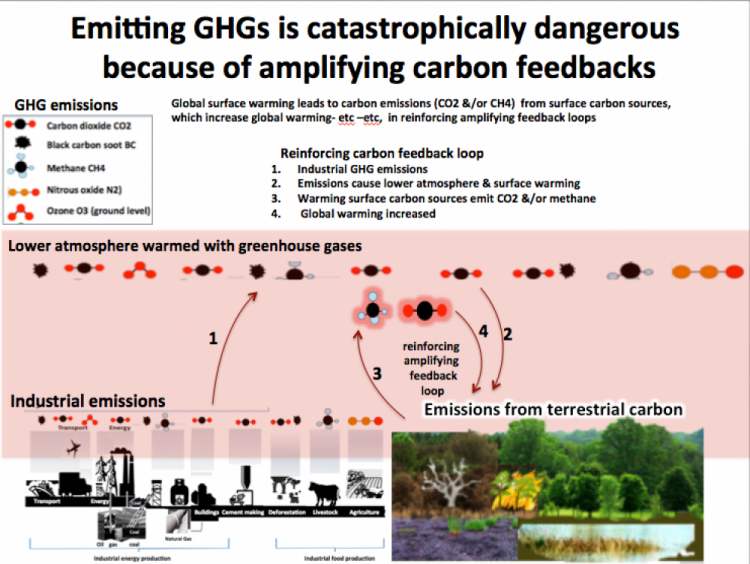
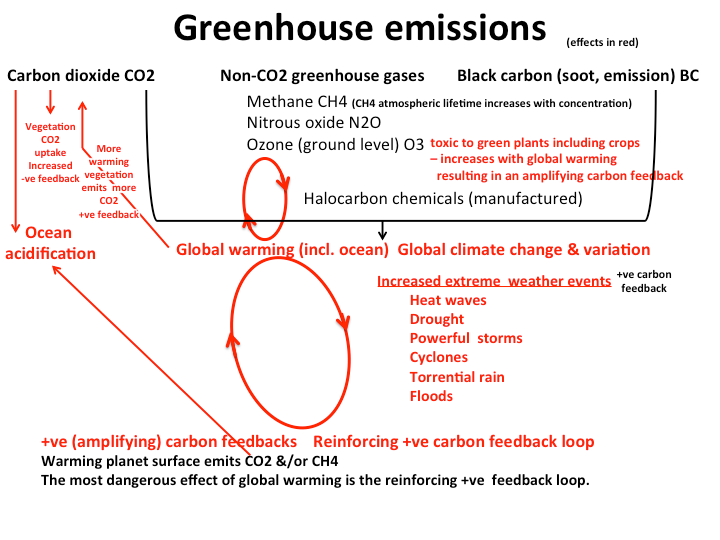
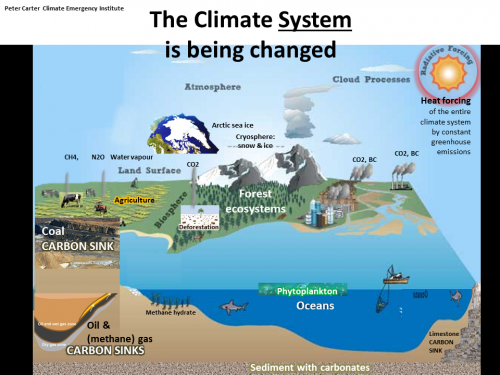
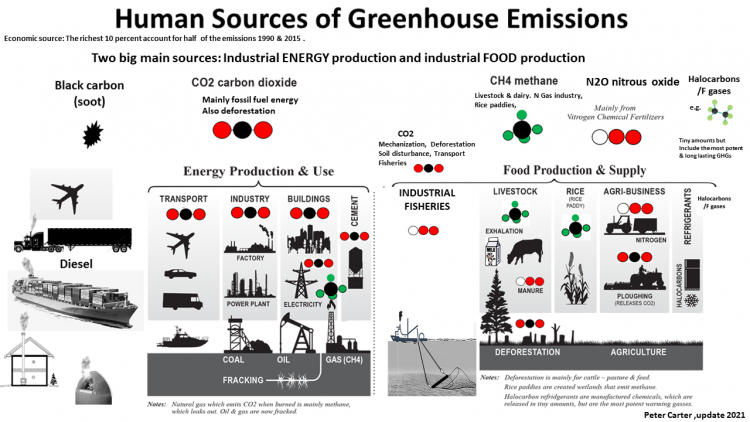
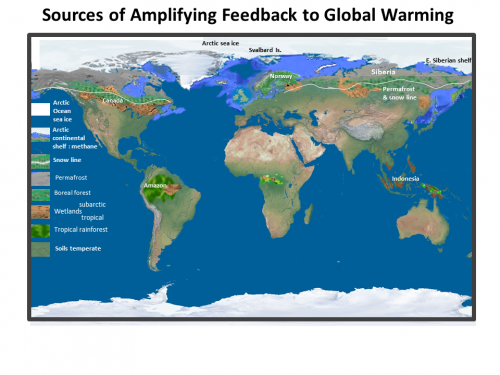
Double click here to edit this text.
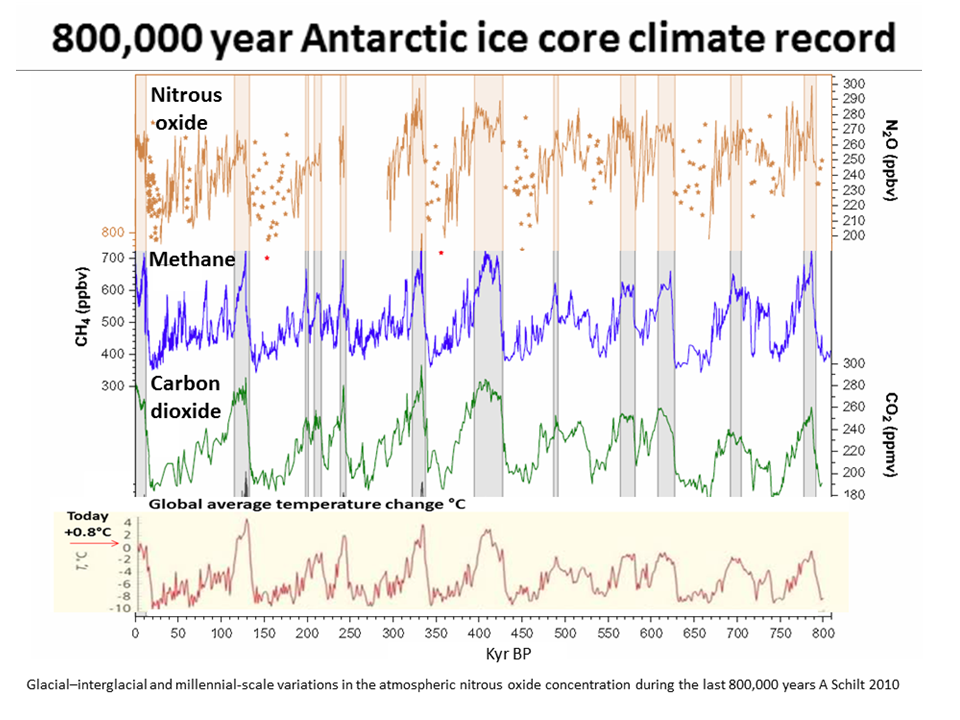
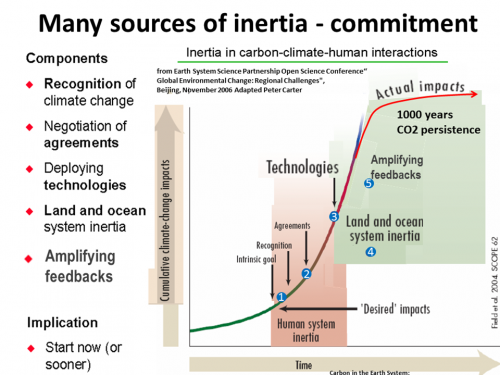
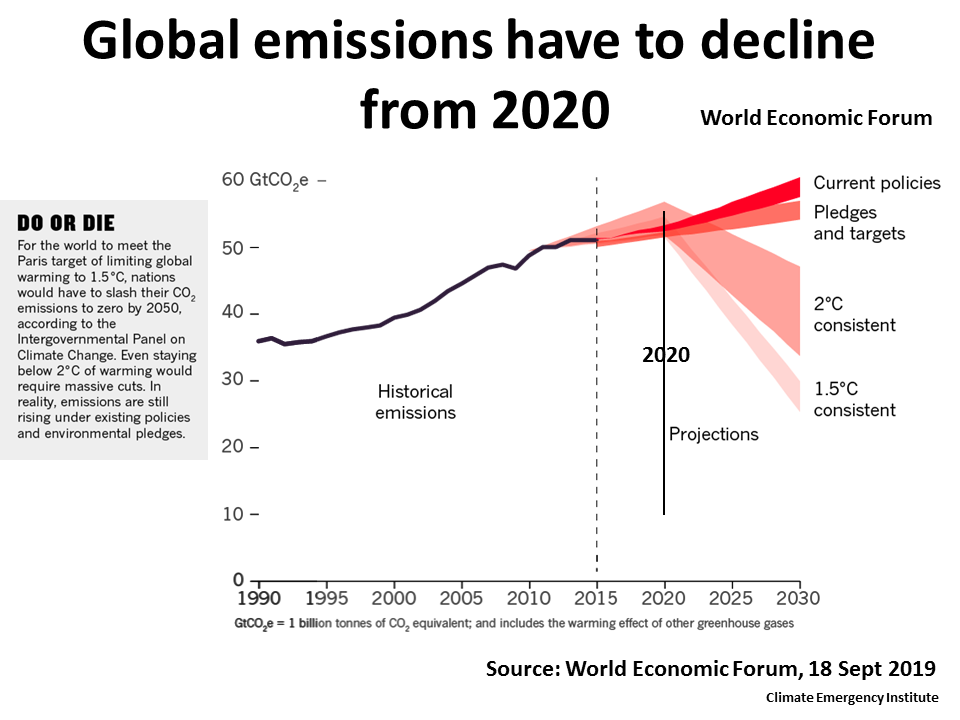
For 1.5°C AND 2°C immediate rapid emissions decline IPCC AR6 (IPCC Chair)
Had to be 2020
Had to be 2020